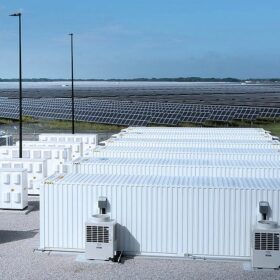WASHINGTON, D.C. – As national leaders call for more reliable energy infrastructure and relief from rising electricity bills, today’s PJM Interconnection 2026/2027 Base Residual Auction (BRA) results send a clear message: higher prices are a signal that the grid urgently needs new resources. These market outcomes should prompt renewed focus on enabling investment, not additional political intervention.
Prices clearing at the cap underscore tightening supply conditions in PJM after years of artificially low prices that discouraged development. Importantly, this auction outcome confirms what competitive developers have already begun acting on; several companies have announced new generation projects and investments in the region over the past year. These results reinforce the case for new entry and signal a readiness to respond—if market signals are allowed to function without disruption.
“Higher prices are a signal to build more generation resources, and reflect increasing stress on the system,” said Todd Snitchler, President and CEO of the Electric Power Supply Association (EPSA). “In recent years, a combination of state and federal policy shifts and poor market signals led to the premature retirement of essential generation. Now, as demand grows and supply tightens, we can’t ignore the consequences of past decisions, and we must accept that reliability comes at a cost. Investment follows clear, consistent rules.”
Competitive power suppliers in EPSA’s membership demonstrated their ability to respond to the signal set by the last auction, supported by PJM actions such as the Reliability Resource Initiative, announcing increased investments in the PJM region and securing critical funding. But continued political interference, unresolved regulatory complaints, and external challenges like permitting and supply chain delays threaten progress. Nearly 46 GW of cleared and approved capacity remains stalled.
“Without market stability, we can’t retain existing megawatts or bring new ones online—and without both, reliability suffers, and costs rise,” Snitchler added. “This auction is yet another urgent reminder that confidence in the market framework must be restored.”
Amid growing concern over energy bills, EPSA points to recent analysis showing that competitive generation costs remain historically stable. In contrast, rising utility transmission costs and state policy mandates are driving rate increases—often outside the transparency and discipline of competition.
“When allowed to function, competitive electricity markets are the most effective way to deliver affordable, reliable power,” said Snitchler. “They ensure consumers benefit from innovation and efficiency, while supporting the investment needed to meet long-term demand. But a reliable grid isn’t free. Resources must be fairly compensated to stay available when they’re needed most.”
The auction also underscores a broader truth: a reliable grid requires investment, and that investment must be supported by market-based compensation. While consumer attention on electricity bills is intensifying, competitive generation costs remain historically stable and efficient. In contrast, increasing utility transmission and distribution spending and state-directed policy costs are increasing bills outside the discipline of competitive markets.
“Investors need consistent, predictable signals to invest, and this auction delivers yet another clear call that more supply is needed,” he continued. Without market stability, we don’t retain existing megawatts and deliver new development. And without both types of megawatts, reliability falters and prices could rise further,” said Snitchler.
EPSA urges the Federal Energy Regulatory Commission (FERC) to protect the integrity of competitive markets, act swiftly to resolve pending PJM market design complaints, and provide the regulatory clarity needed to restore confidence, encourage new supply, and maintain system reliability.
Policymakers must also recognize the benefits of electric competition and ensure that market signals, not political agendas, drive decisions to meet the region’s future electricity needs.
Key Auction Facts & Takeaways
• Clearing Price: $329.17/MW-day (compared to $269.92/MW-day in 2025/2026)
• Total Capacity Procured: 134,311 MW of Unforced Capacity (UCAP)
• New Entry: 2,669 MW UCAP of new generation and generation uprates cleared, marking the first uptick in such additions across the last four auction cycles.
• Resource Mix: 45% gas, 21% nuclear, 22% coal, 4% hydro, 3% wind, and 1% solar.
• Zonal Price Variation: All prices cleared at the cap. The BGE and DOM Local Deliverability Area (LDA) prices decreased from $466.35 and $444.26 in 2025/2026, respectively, to $329.17 for 2026/2027.
• Delivery Year: June 1, 2026 – May 31, 2027





